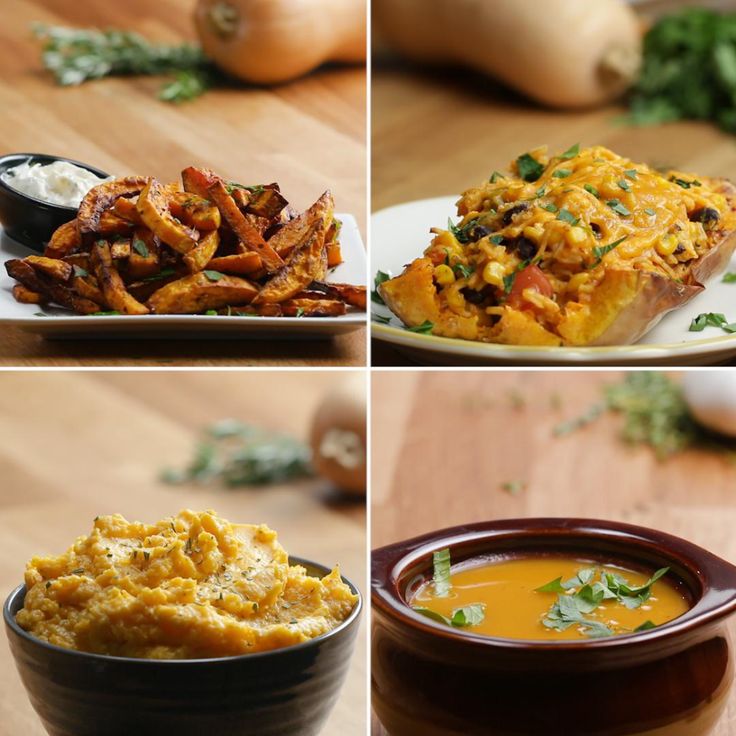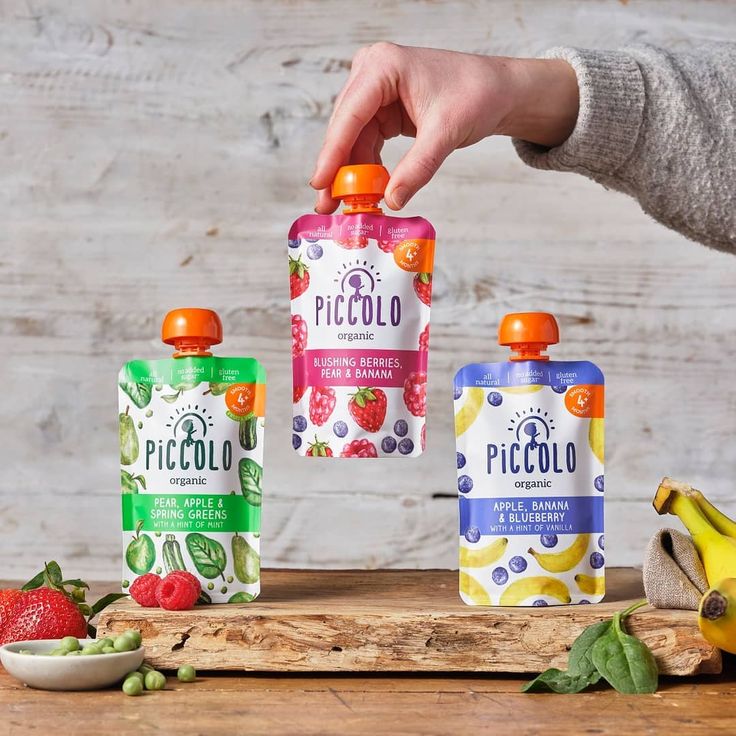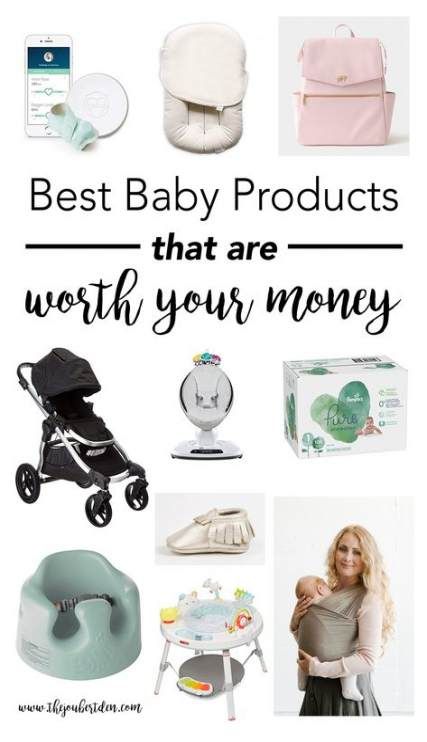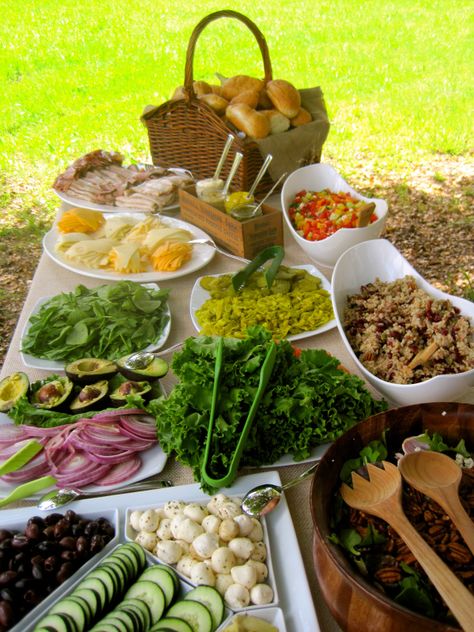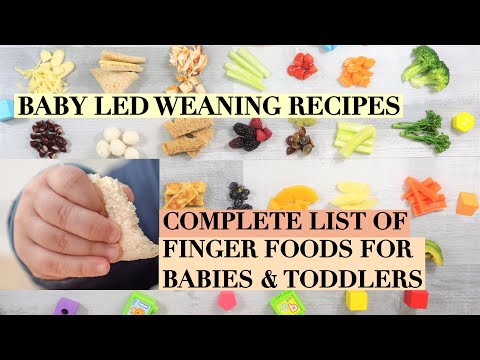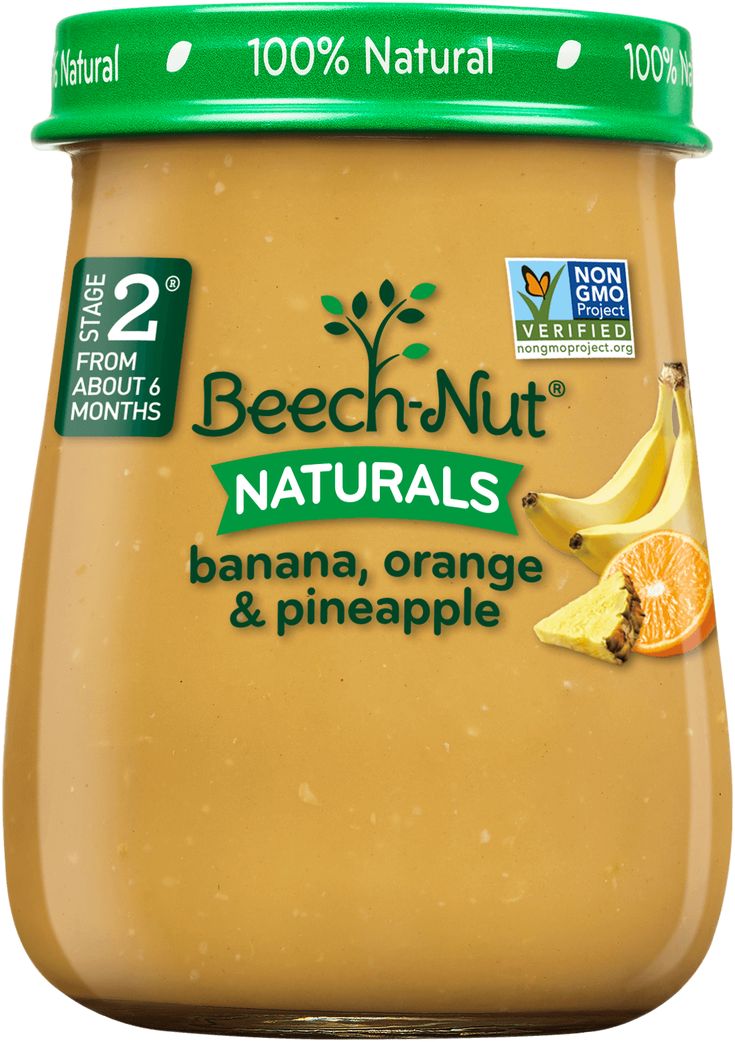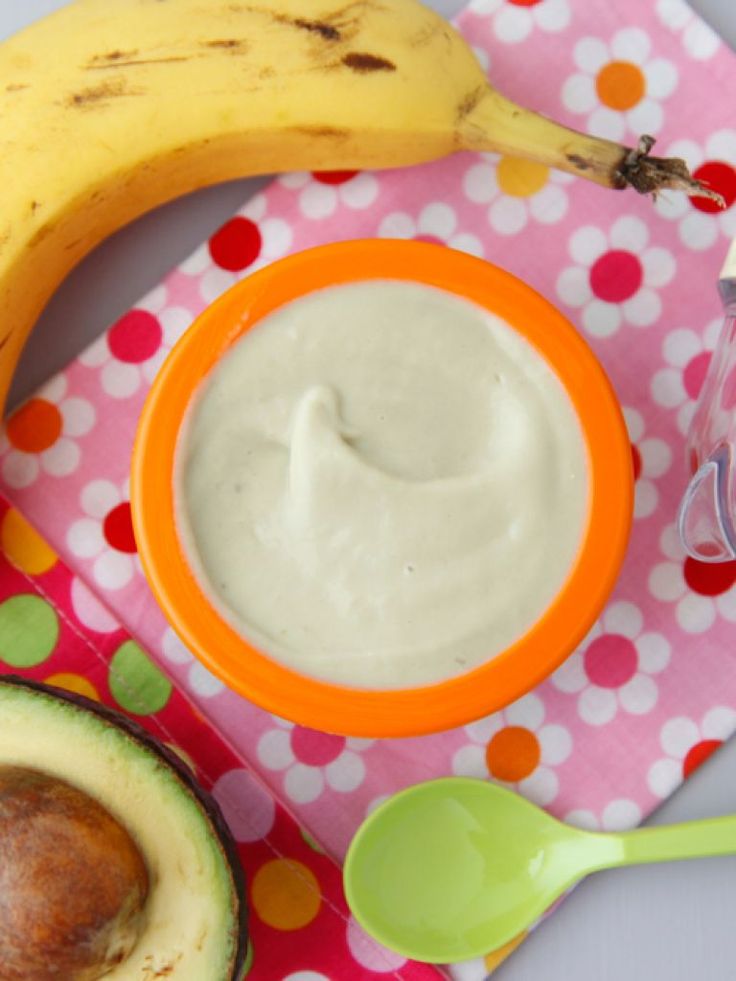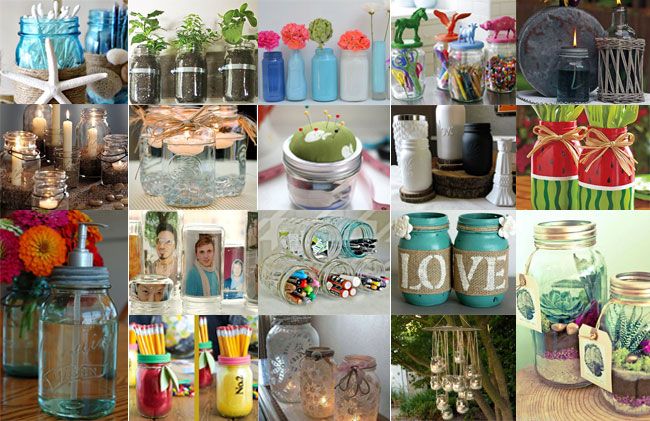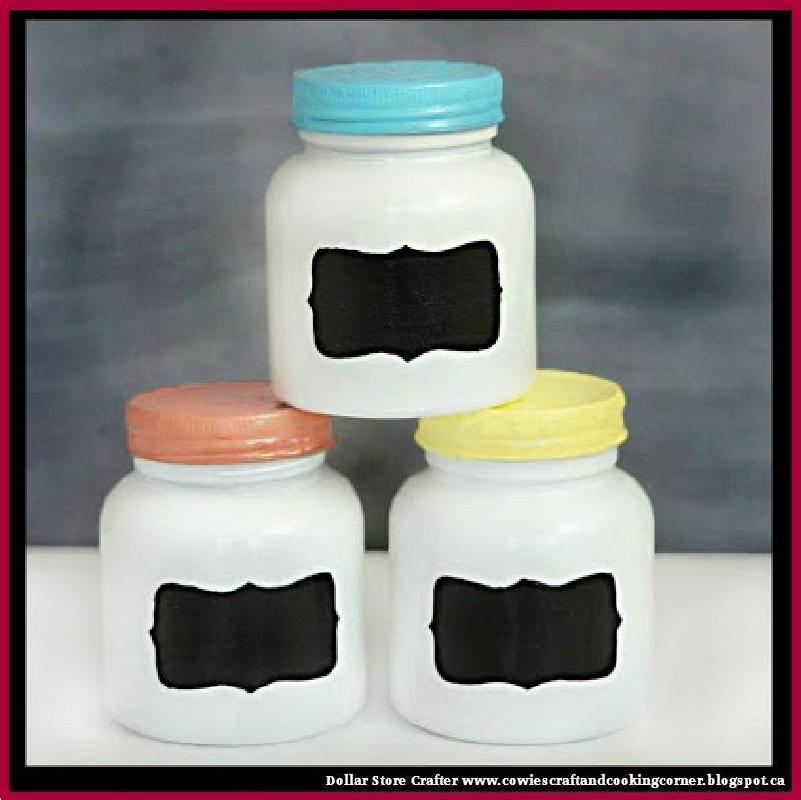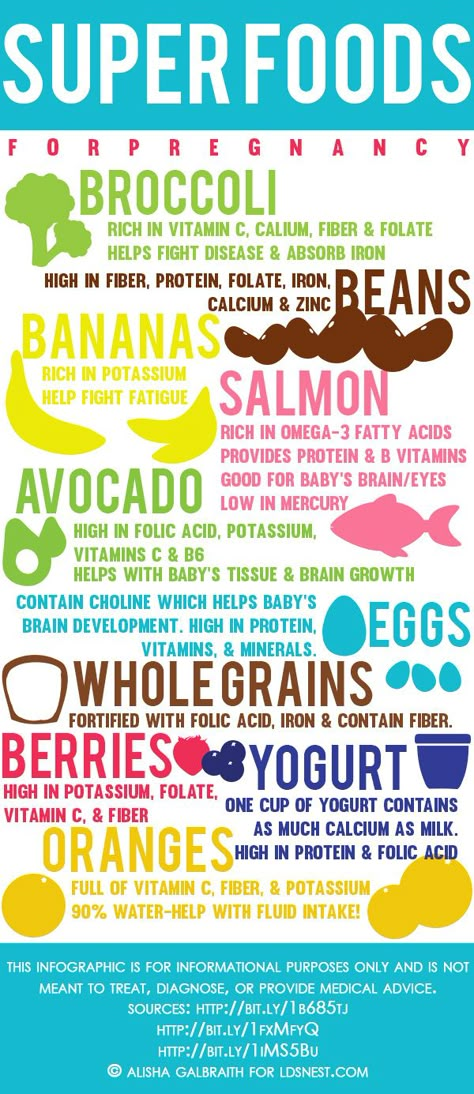How to prepare butternut squash baby food
Butternut Squash Baby Food (Stage One)
This homemade Roasted Butternut Squash Baby Food Puree recipe not only contains calcium, folate, fiber, and vitamins A and C, but it is also a deliciously smooth way to introduce butternut squash to your baby! It’s a great Stage 1 baby food for 4-6 months and up!
Medically reviewed Jamie Johnson, Registered Dietitian Nutritionist (RDN), and Lauren Braaten, Pediatric Occupational Therapist (OT).
Butternut Squash Baby FoodThis butternut squash puree is a quick and simple recipe that involves roughly 5 minutes of hands-on time! 🖐
We’ll let the oven do all the hard work for the rest of the prep time. Cuz why should we work harder 💪 when we can work smarter? 🙋♀️
Butternut squash contains calcium, folate, fiber, and vitamins A and C and is considered one of the very best first foods for your baby.
Is it your first time making homemade baby food? Then I suggest you start this journey by reading my in-depth Guide on How to Make Homemade Baby Food. The detailed guide goes over all the important information such as the best cooking tools to have on hand, safe storage, how to know when baby is ready for solids, how to introduce purees, the best first foods for baby, and more! You can also check out my best-selling cookbook for even more information and recipes!
Butternut Squash Video
Watch this video to see just how easy it is to make this delicious puree for your baby!
Reasons to Love this Butternut Squash Puree- creamy and smooth
- great for 4-6+ months
- stage one baby food
- healthy — full of essential nutrients for your baby
- easy to make — requires only 5 minutes of hands-on time
- babies will love the sweet and earthy taste
- homemade
- freezer-friendly
- budget-friendly
Health Benefits of Butternut Squash
- High levels of antioxidants and vitamins A and C, which boosts the immune system and reduces inflammation
- A good source of potassium that helps keep bones healthy
- Contains a protein that may be a potent anticancer agent
- Provides calcium to help strengthen bones and folate to help with brain development
Make sure to read the recipe card below for full ingredients and instructions!
- Butternut Squash: This is an easy-to-find, inexpensive, and nutritious food for your baby! When selecting butternut squash, look for a firm squash that has a solid beige color skin without bruising or damage marks.
 The insides will range from bright yellow to burnt orange, so don’t be alarmed if yours is somewhere in that color range.
The insides will range from bright yellow to burnt orange, so don’t be alarmed if yours is somewhere in that color range. - Thyme or Rosemary: We are kicking up the flavor profile with a fun and fresh herb — thyme or rosemary. Either of these herbs will tone down the earthiness of the squash and ramp up its freshness and citrus aspect. You can’t go wrong with either. But you can always skip adding herbs and spices to your baby food if you prefer (see more below).
Adding Healthy Fats Tip: If you are looking to add some extra healthy fat to your baby’s meals, then you can drizzle the butternut squash with extra virgin olive oil before roasting. Olive oil is a healthy fat that is full of omega 3 and omega 6 that helps baby absorb vitamin D which is important for bone growth and strengthening.
Tools NeededThese tools will make it a lot easier for you to make this healthy Sweet Potato puree. For more of my favorite kitchen tools make sure to check out my online shop.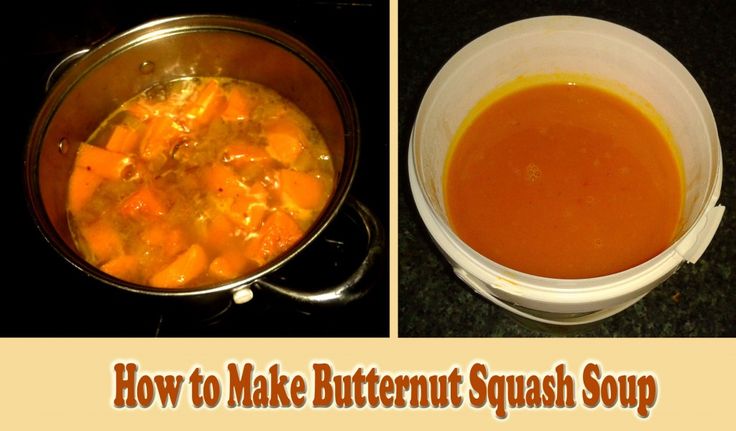
- Baking Sheet
- Blender or Food Processor
- Knives
- Freezer Tray
- Storage Containers for Fridge
- Stasher Bag
- Bib with catch pocket
- Reusable pouches
- Heat Oven: Preheat the oven and line a baking sheet.
- Prep Squash: Cut the butternut squash in half and scoop out the seeds. Place them on the baking sheet with the flesh side down, and brush with olive oil (optional).
- Bake: Place the baking sheet in the oven and bake until easily pricked with a fork.
- Scrape: Let it cool, and then scrape off the skin until you only have the butternut squash left. Add to the blender or food processor.
- Add Herbs: Add in a pinch of thyme or rosemary to the butternut squash.
- Puree: Turn on the blender and puree until smooth, adding liquids if needed.
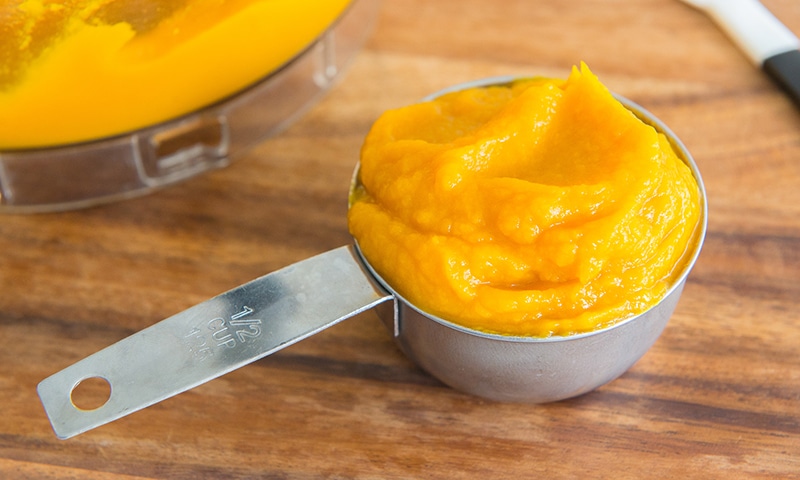
- Serve or freeze for another meal.
While I love the earthly, caramel flavor of roasted butternut squash, there are several ways you can cook butternut squash for baby food.
SteamingPeel and roughly chop 1 butternut squash. Place the cubes into a steamer basket over 2 inches of boiling water for 10-15 minutes or until tender when pricked with a fork. Puree in a blender as directed below.
BoilingPlace 1 peeled and roughly chopped butternut squash into a medium saucepan, add enough water to cover the butternut squash, and bring to a boil. Reduce to simmer and cook for 7-10 minutes or until tender when pricked with a fork. Puree in a blender as directed below. Note that boiling the butternut squash decreases the nutritional value of the puree since a lot of the nutrients are thrown out with the water after cooking.
Saving Time Tip: Steaming or boiling butternut squash are great methods to use if you are using prepared or frozen butternut squash.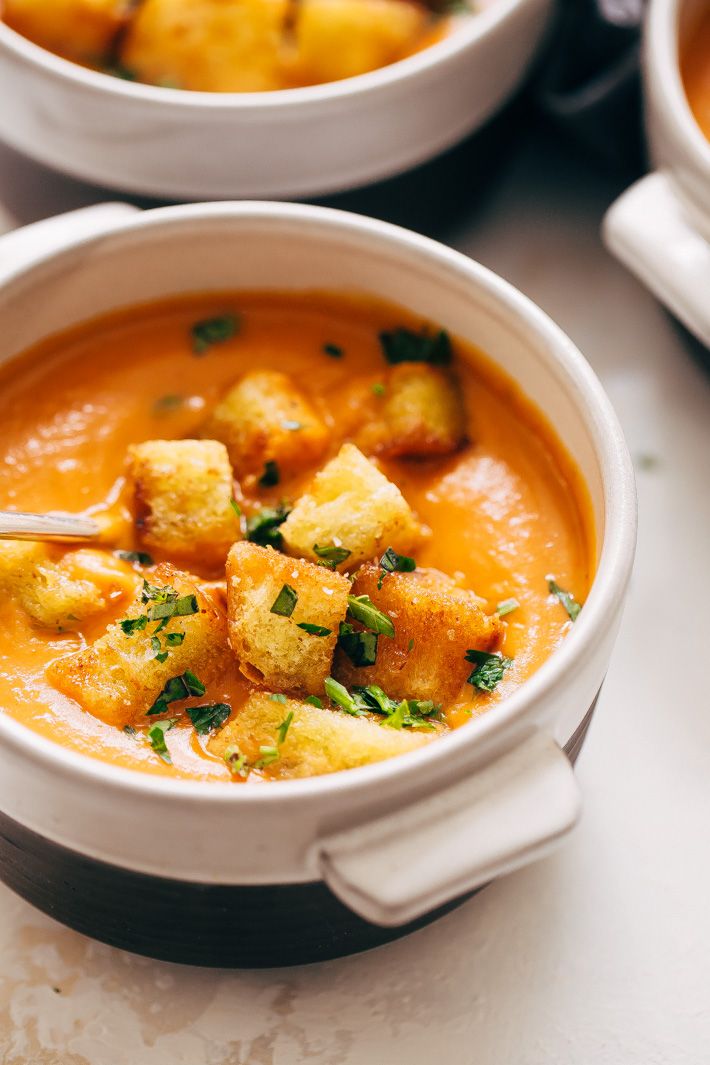 I have found both peeled and cubed fresh or frozen butternut squash in my grocery store, which are both viable options if you are short on time.
I have found both peeled and cubed fresh or frozen butternut squash in my grocery store, which are both viable options if you are short on time.
Frequently Asked Questions
Can butternut squash be baby’s first food
Butternut squash can 100% be your baby’s first food if you want it to be. It is recommended to wait to introduce the top eight allergen foods to your baby once a few other well-tolerated foods have been introduced, but otherwise, foods can be introduced in any order so choose whatever you are most excited for your baby to have.
Is butternut squash a common allergen for baby?
No, butternut squash is not a common allergen, however, as with any food, start with a small portion and be aware of any signs that might be an allergic reaction after introducing it.
When can baby eat butternut squash?
Babies can have butternut squash as one of their first foods.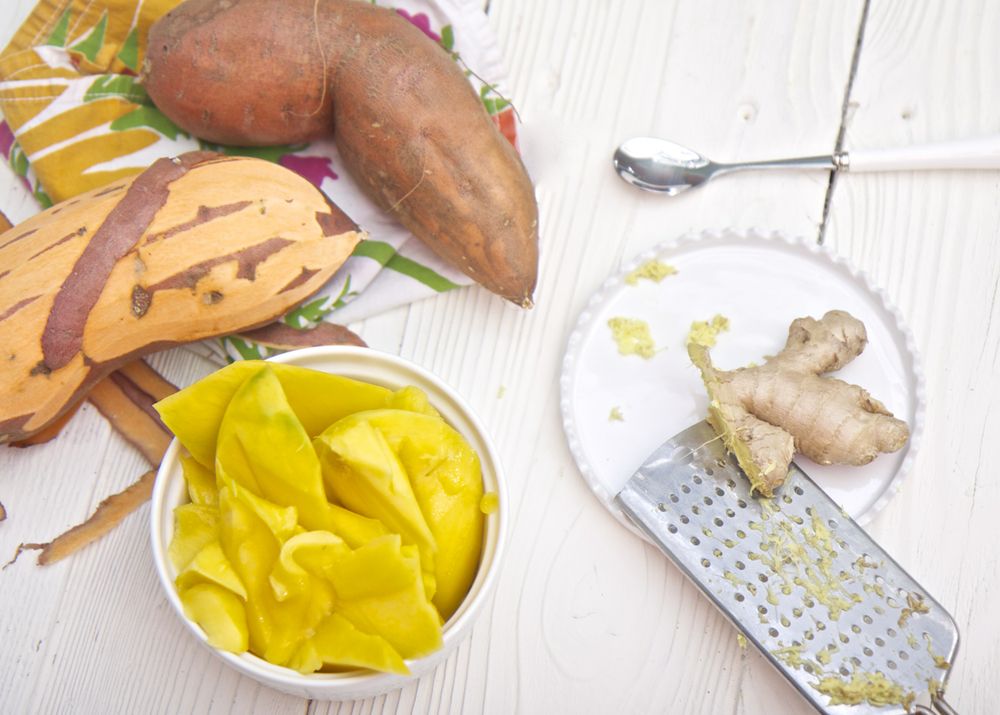 When a baby can start on solids is determined by their own rate of development, which generally comes between 4-6 months of age. Some of the developmental milestones babies need to reach in order to start solids include: if your baby has solid control of their head and neck, if your baby has doubled in weight, and if your baby is reaching for or opening their mouth when you eat (see my guide here). Before you start your baby on purees, you should consult with your pediatrician to make sure your child is developmentally ready.
When a baby can start on solids is determined by their own rate of development, which generally comes between 4-6 months of age. Some of the developmental milestones babies need to reach in order to start solids include: if your baby has solid control of their head and neck, if your baby has doubled in weight, and if your baby is reaching for or opening their mouth when you eat (see my guide here). Before you start your baby on purees, you should consult with your pediatrician to make sure your child is developmentally ready.
Can you add spices or herbs to this baby puree?
Yes! You can add in a pinch of chopped rosemary to this recipe, but feel free to use the following spices instead: basil, cilantro, ginger, nutmeg, coriander, mint, cinnamon, or mild curry powder (see quantity recommendations in the recipe card).
Tip on Spices: I always add spices or herbs to my baby food purees, but you can choose to leave them out in all of your baby food.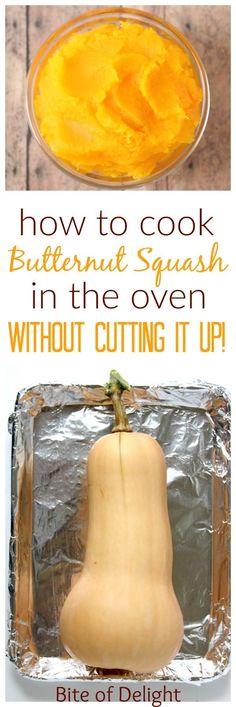 You do you! Either way, this puree will surely taste amazing.
You do you! Either way, this puree will surely taste amazing.
Does butternut squash cause constipation for babies?
Butternut squash, though unlikely, may cause constipation in some babies, so avoid giving too much.
How to Store Butternut Squash Baby FoodRefrigeratorYou can store this puree in an airtight container in the fridge for up to 4 days.
FreezerThis puree can be frozen for up to 4 months.
- Spoon puree into a freezer storage container– do not overfill.
- Place the lid on the storage container or cover with a piece of saran wrap, and label with the date and recipe name.
- Place the tray into the freezer and let it freeze completely — preferably overnight.
- Pop-out the baby food cubes and place them in a ziplock baggie or stasher bag. Don’t forget to relabel the baggie or stager bag for future reference.

Need more information on how to store your baby foods? Head over to my Best Baby Food Storage Containers – Plus 6 Tips on Freezing and Thawing post!
Label Tip: Don’t forget to label your purees before you place them in the fridge or freezer with the name of the puree and the date you made it. Take it from me; by the end of the week, you will completely forget what is in your freezer and how long it’s been there. 😉
Puree Feeding Tips
- Follow your baby’s lead – when feeding purees from a spoon, sometimes there’s a tendency to keep offering bites past the point of your baby being full. Always follow baby’s cues for when they are done eating. Turning away from the spoon, closing her mouth, or pushing food away are all signs that baby is finished with the meal.
- Trial adding a little seasoning or spice to purees – babies like flavor! Or consider changing the temperature of purees from time to time, to slightly warmed or slightly chilled.
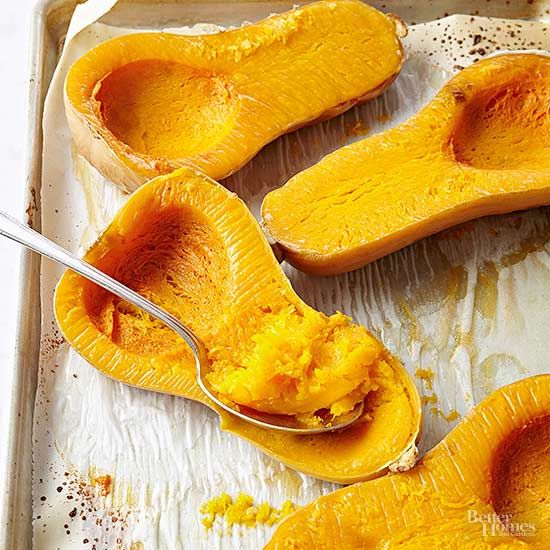 Varying these aspects adds to the sensory experience!
Varying these aspects adds to the sensory experience! - Place a small amount of puree on the tray during spoon feeding, so that your baby can dip their fingers or hands in the puree. Allowing baby to explore foods in this way helps them learn to self-feed and can help them be more willing to try new textures and foods in the future.
While this butternut squash puree is tasty by itself, it’s also super easy to mix and match with other nutrient-dense baby food purees. So give these fun flavor combos a try!
- Apples
- Carrots
- Pears
- Cherries
- Quinoa Baby Cereal
- Chicken
- Corn
- Sweet Potato
- Soft Tofu
- Pumpkin
- Mango
- Cauliflower
- Yogurt
I’D LOVE TO KNOW HOW IT TURNED OUT! LEAVE A COMMENT AND A ⭐️ RATING BELOW 👇
Or watch a shortened version of the video here.
- 1 butternut squash
- 1 tsp fresh thyme or rosemary, roughly chopped
- 1-2 tsp olive oil (optional)
- 1/2-1 cup liquid (water, fresh breast milk, formula, stock or bone broth)
Preheat: Heat oven to 450 degrees F. Line baking sheet with a silicone mat, tin foil or parchment paper.
Prep: Cut butternut squash in half, deseed and place flesh side up, skin side down on the baking sheet. Optional – feel free to drizzle the squash with 2 teaspoons of olive oil for some added healthy fat.
Roast: Place the baking sheet into the oven and bake for 45-60 minutes or until you can easily prick the squash with a fork.
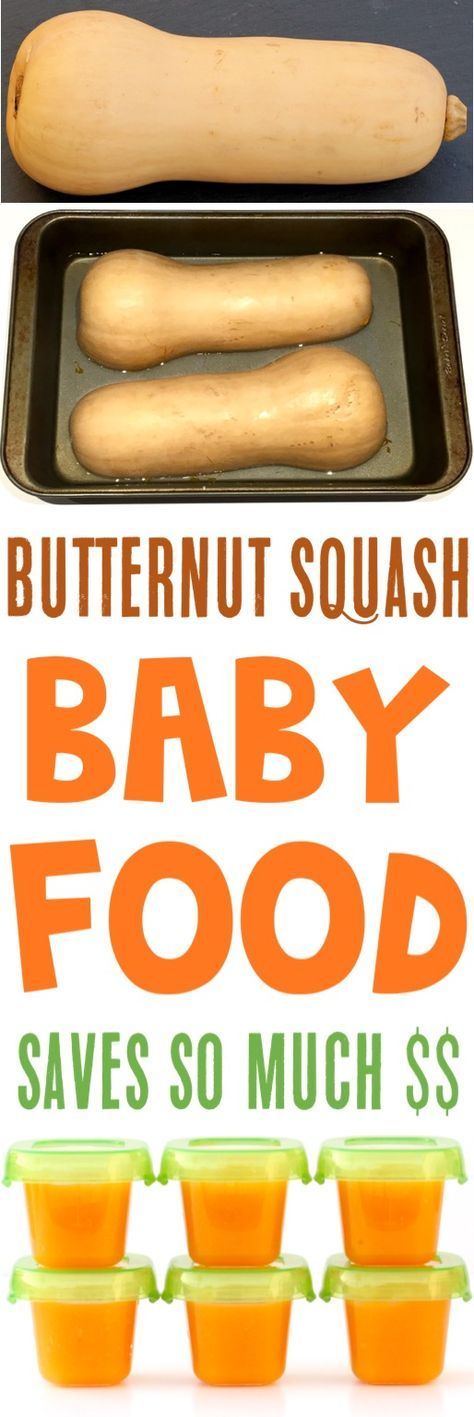
Peel: Let cool until you can handle the squash with your hands. Scrape the flesh off of the skin and place in a blender or food processor.
Add Herbs: Add the thyme or rosemary to the blender.
Puree: Turn on the blender or food processor and puree, adding liquid in 1/4 cup increments until you have the desired consistency. I had to add in 3/4 cup of water to my puree shown below.
Eat: Serve or freeze for later.
Age: 4-6 months and up
Yield: 25 ounces
Additional Spices: Feel free to sub the thyme or rosemary for 4 chopped basil leaves, 1 tsp chopped cilantro, 1/2 tsp minced fresh ginger, 1/2 teaspoon nutmeg, 1/2 tsp coriander, 1/2 tsp cinnamon or even 1/2 tsp of mind curry powder.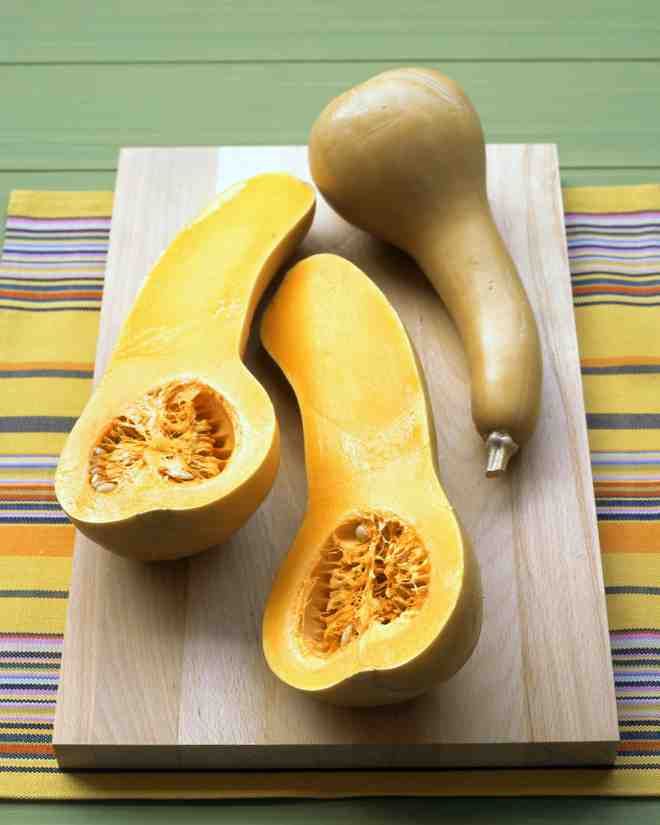
Freezer Tray
Blender
Silicone Baby Bibs
Bumkins Baby Bowl
Tripp Trapp High Chair
GreenPan Cookware
Did you make this recipe?
Tag @babyfoode on Instagram and hashtag it #babyfoode!
Pin Recipe Email a Friend
Butternut Squash for Babies - MJ and Hungryman
Jump to Recipe
Butternut squash is an amazing first food for babies. Here's how to cook it as well as serving suggestions for 6 months and up.
Jump to:- When can babies eat butternut squash?
- Healthy benefits
- Is butternut squash safe for babies?
- Selecting the best squash
- Cooking Methods
- How to cut for baby led weaning
- How to Store
- Frequently Asked Questions
- Butternut squash recipes for babies
- How to cook butternut squash for babies
When can babies eat butternut squash?
Butternut squash can be offered to babies as soon as they’re ready to start solids, usually around 6 months.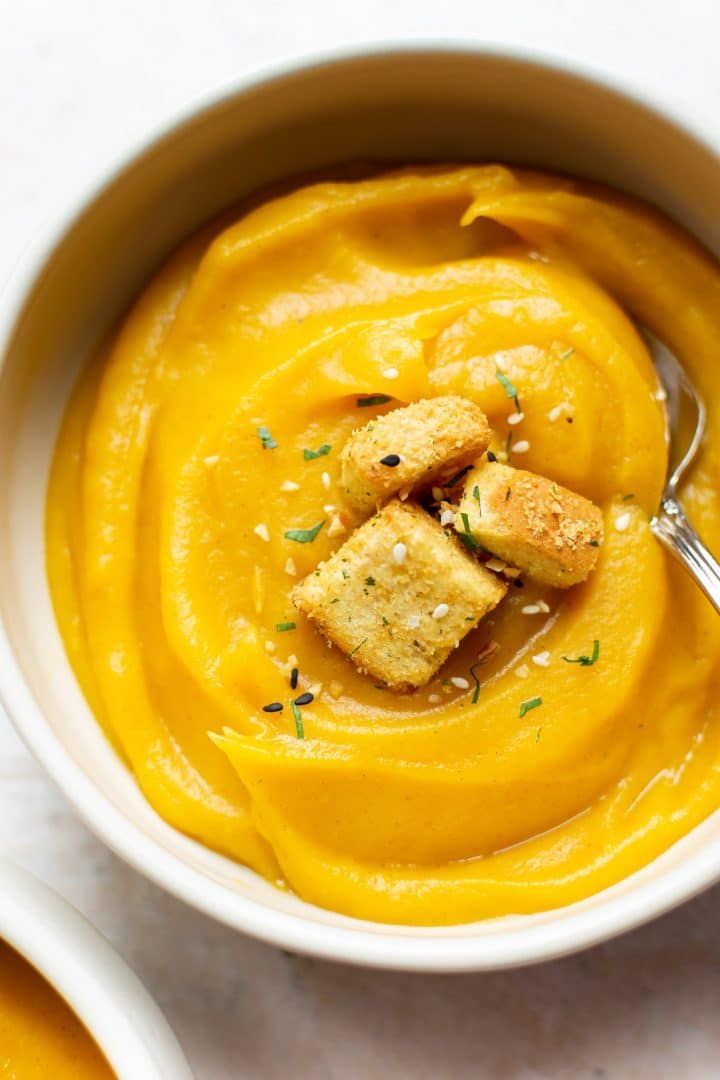 It’s important to remember that your baby is unique and that rather than going by the calendar, you need to make sure your baby is DEVELOPMENTALLY ready to start solids.
It’s important to remember that your baby is unique and that rather than going by the calendar, you need to make sure your baby is DEVELOPMENTALLY ready to start solids.
If you’re unsure, be sure to grab my FREE handout!
Healthy benefits
Interesting fact! Butternut squash is technically a fruit because it contains seeds, just like spaghetti squash, pumpkin, avocados, tomatoes.
It's not only delicious and versatile, but it is also loaded with vitamins, minerals, and antioxidants.
It's particularly high in:
- Vitamin A - important for eye and bone health and immune function
- Vitamin C - helps boost immunity and enhances iron absorption
- Magnesium and potassium - aid in optimal bone health
Just like mangoes, its bright orange color is due to an antioxidant called carotenoids, which gets converted into vitamin A. Carotenoids are fat-soluble compounds, so they are best absorbed with fat.
Last but not least, it's also a great source of both soluble and insoluble fiber.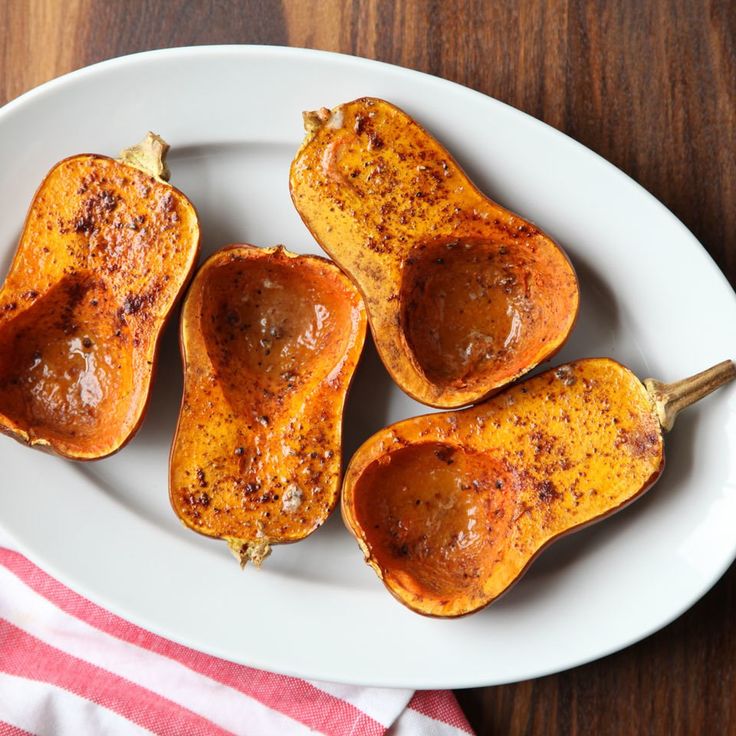
Is butternut squash safe for babies?
As long as it's offered in an appropriate size and texture, it is safe. Let me show you how! Butternut squash allergy is very rare as well.
Related: Best First Foods for Babies
Selecting the best squash
Look for one that's solid, dull dark beige in color, and doesn't contain any green streaks on the skin. Make sure there are no serious cuts or soft spots.
It should feel firm and heavy for its size. I like to pick up several that are similar in size and choose the heaviest one. Make sure the stem is intact.
Cooking Methods
It's VERY important that the squash is cooked until soft enough to be easily smooshed between thumb and forefinger.
Steamed
Place water in a pot, add steamer basket, and bring to a boil. Add the squash, cover, reduce heat to medium, and cook for 15 minutes.
Turn off the heat and let it sit covered for 5 minutes to continue steaming. It should be easily pierce-able with a fork.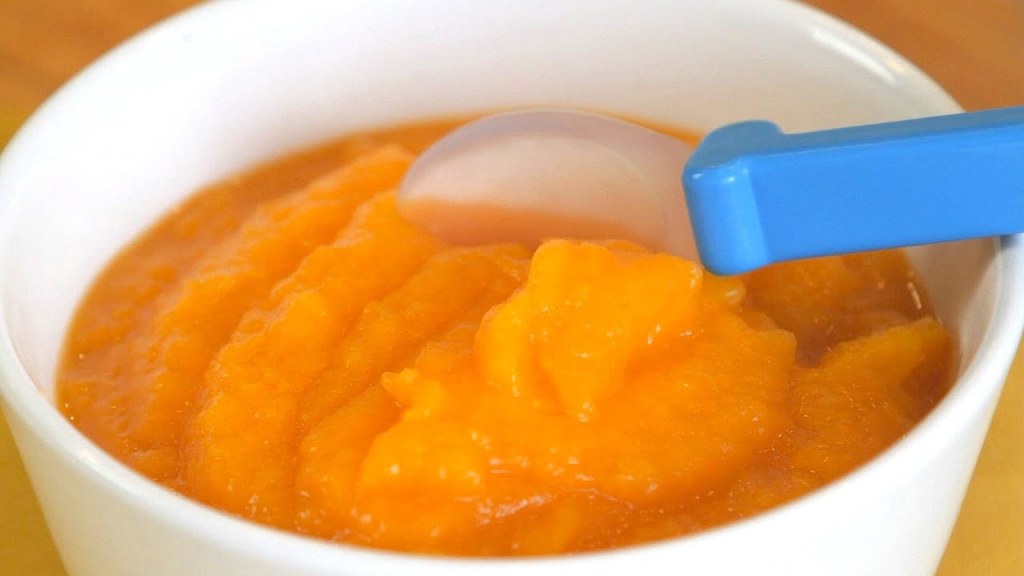
Roasted
Roasting is the easiest and most flavorful way to cook the squash (or any vegetable for that matter). Soft and caramelized flesh - yes please! This is actually the only cooking method I use to cook our squash.
- Cut squash in half - Trim the stem end and cut the squash in half. Remove the seeds. Coat both the skin and flesh with oil. You can also add seasoning(s) at this time.
- Cook for 30-45 minutes, for 1 ½ to 2 pound squash.
How to cut for baby led weaning
6+ months old
Pureed - Add cooked squash into a blender and blend until smooth. Add breastmilk/formula, water, or even broth to thin out to desired consistency.
Mashed - Whether you are advancing in texture after doing purees or starting with baby led weaning, this is such an easy and versatile way to serve the squash to your baby.
Simply mash with the back of a fork and add to:
- Homemade baby oatmeal
- Quinoa
- Lentils
- Chia Pudding
- Overnight oats/quinoa
- Toast
- Yogurt
- Egg veggie pancakes
6-9 MONTHS OLD
Bigger is better and safer at this age so your baby can easily grab the food with their palm and bring to mouth.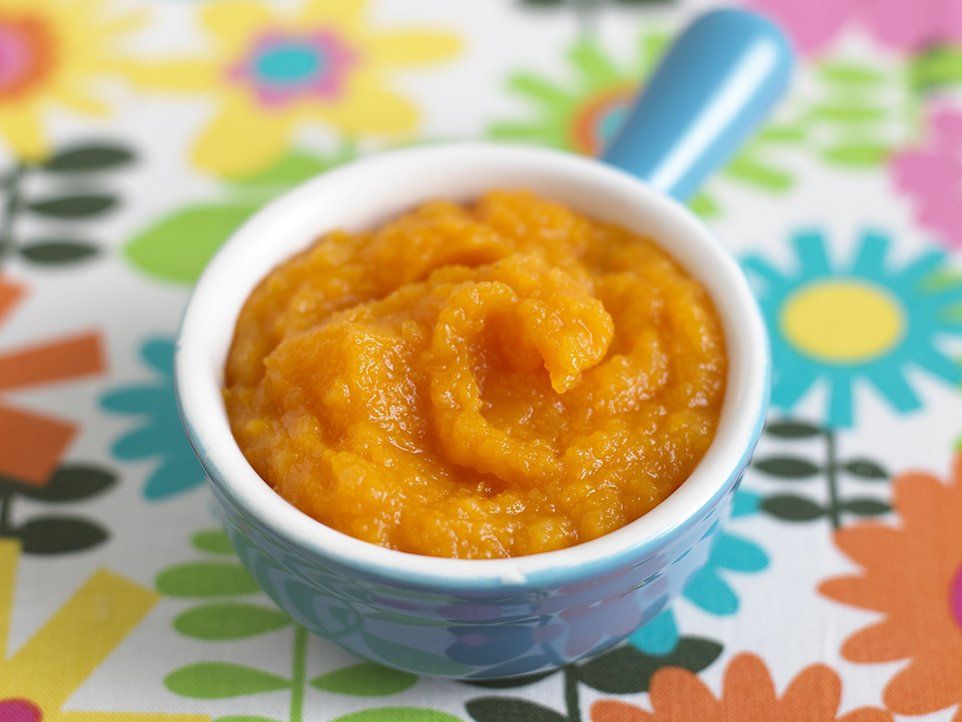
Cut into thick strips or half-moon shapes. Again, the squash should be easy to smush between your thumb and forefinger.
Related: Right food size and texture for baby led weaning
9+ MONTHS OLD
As your baby develops their pincer grasp and is able to pick up small pieces of food using their thumb and finger, you can cut into small, bite-sized pieces. I still suggest continuing to offer larger pieces so they can practice taking bites.
I emphasize this because my son was the ultimate shoveler, and cutting into small pieces only made it worse. With my second baby, I offered her large pieces along with bite-sized pieces, and it’s definitely helped her to slow down and to take bites rather than shovel.
If you haven't already, this is a good time to introduce utensils. Your baby will most likely just play around or toss it. But it’s still great for exposure!
Try forking a piece of squash and plate on their plate. Be sure to continue modeling. They are like sponges and learn by watching you!
12+ months old
Continue practicing with those utensils! When serving mash, use the hand-over-hand method to guide your baby's hand to scoop with a spoon.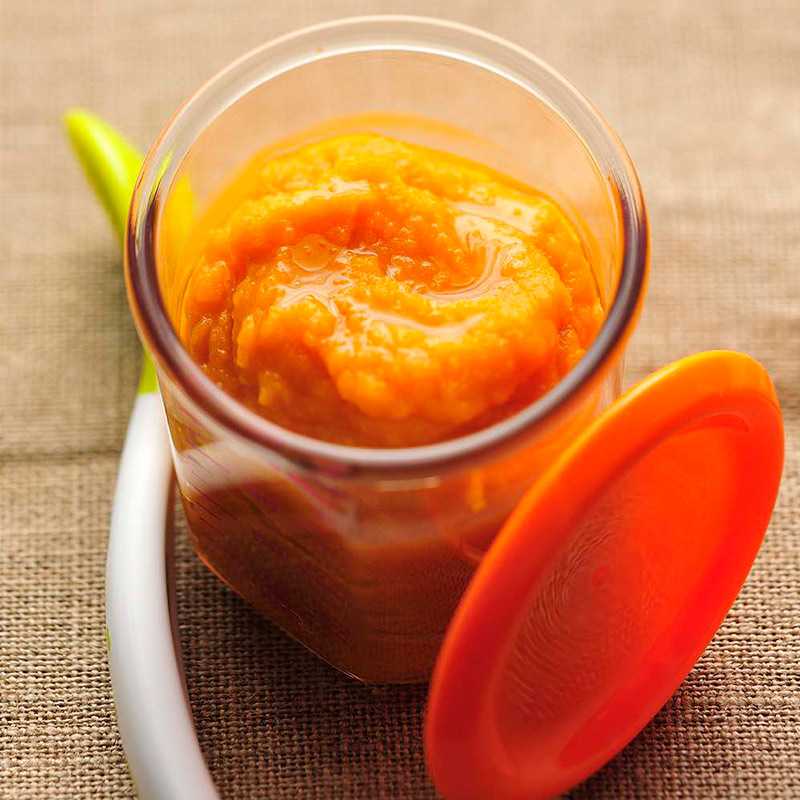 Same goes for forking a bite-sized piece.
Same goes for forking a bite-sized piece.
Again practice practice practice, with a lot of patience sprinkled in. It's a skill that takes time to master.
How to Store
For uncooked
Whole squash can be stored in a cool, dark place for up to 3 months. Once cut, wrap the squash in plastic wrap or store in an airtight container for up to a week in the fridge.
For cooked
Store in an airtight container for 3-5 days in the fridge.
To freeze
You can either flash freeze or puree and freeze in a tray (I LOVE this one) for up to 3 months.
Frequently Asked Questions
Can I eat the skin of the squash?
It is edible and a great source of fiber, vitamins, and minerals. However, it really depends on the age of the squash. With some, the skin gets tender once roasted, but some have a thicker, unpleasant texture. I advise peeling for your baby, and for older children and adults, you can decide ;).
Can I season butternut squash for babies
Absolutely yes! While it's delicious on its own, you can easily boost the flavor by adding herbs and spices. Cinnamon is a classic, but cumin, curry powder, smoked paprika, and Italian seasoning (to name a few) are all great!
What should I do with the seeds?
Roast them! First rinse and dry thoroughly. Toss with some oil and seasoning, spread into a single layer on a baking sheet, and roast at 350°F for 15-20 minutes (stir halfway through).
They are not appropriate for babies, but make for a perfect snack for you! Be sure to nourish yourself, too.
Butternut squash recipes for babies
Its slightly nutty and sweet flavor makes for such a great addition to so many recipes.
- Meatballs
- Pancakes
- Sandwiches
- Pasta sauce
Did you make this recipe? Leave a rating below and let me know how you liked the recipe! Your feedback means so much to me!
How to cook butternut squash for babies
Butternut squash is an amazing first food for babies.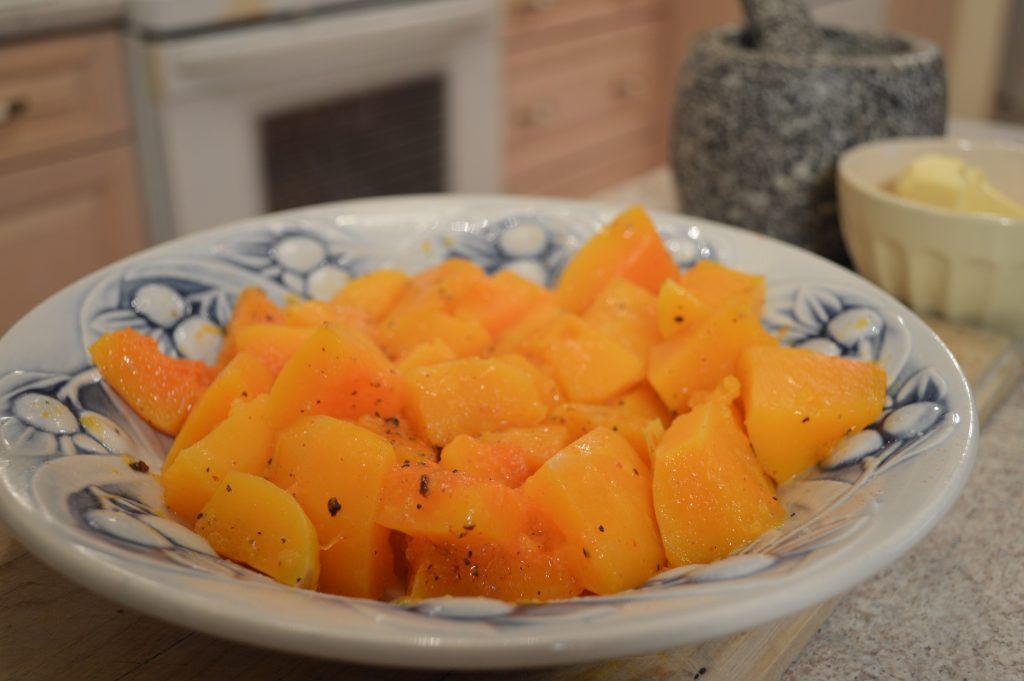 Here's how to cook it as well as serving suggestions for 6 months and up.
Here's how to cook it as well as serving suggestions for 6 months and up.
5 from 3 votes
Print PinPrep Time: 5 minutes
Cook Time: 40 minutes
Total Time: 45 minutes
Servings: 20
Author: Min | MJ and Hungryman
- ▢
Sheet Pan
- ▢
Baking Mat
- ▢
Steamer
- ▢
Freezer Tray
- ▢ 1 butternut squash
- ▢ 2 tablespoons oil, divided (if roasting)
- ▢ seasoning(s) of choice (if roasting)
Steamed
To cut: First wash and dry the squash. Using a sharp knife, cut ends off. Peel the skin using a vegetable peeler. Cut in half and scoop out the seeds. Then cut the flesh into half moon shapes.
Place water in a pot, add steamer basket, and bring to a boil. Add the squash, cover, reduce heat to medium, and cook for 15-20 minutes, until fork tender.
Let it sit covered for 5 minutes to continue steaming.
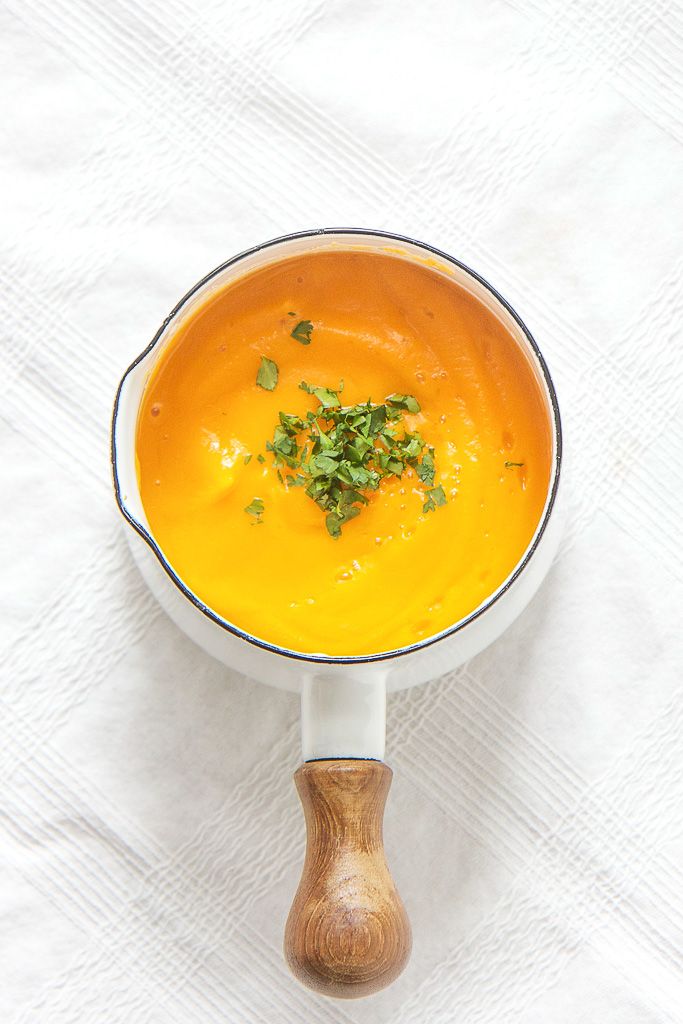 Cut into desired size.
Cut into desired size.
Roasted
To cut: First wash and dry the squash. Place on a study cutting board (recommend placing a kitchen towel underneath) and trim the stem and bottom of the squash. Carefully cut in half lengthwise. Remove the seeds using a spoon.
Preheat oven to 400°F. Line a large baking sheet with parchment paper or baking mat.
Brush both halves with water and seasoning(s) of choice. Place the squash cut side down on the baking sheet. Roast until the flesh is soft and fork-tender, about 30-45 minutes, for 1 ½ to 2 pound squash.
Turn the squash over and allow to cool. Cut according to your baby's age. The skin should easily peel back.
- Store in an airtight container for 3-5 days in the fridge.
- To freeze: you can either flash freeze or puree and freeze in a tray for up to 3 months.
Calories: 29kcal | Carbohydrates: 4g | Protein: 1g | Fat: 1g | Sodium: 2mg | Calcium: 18mg | Iron: 1mg
Course Side
Cuisine American
Tried this Recipe? Tag me Today!Tag me @KidFriendly.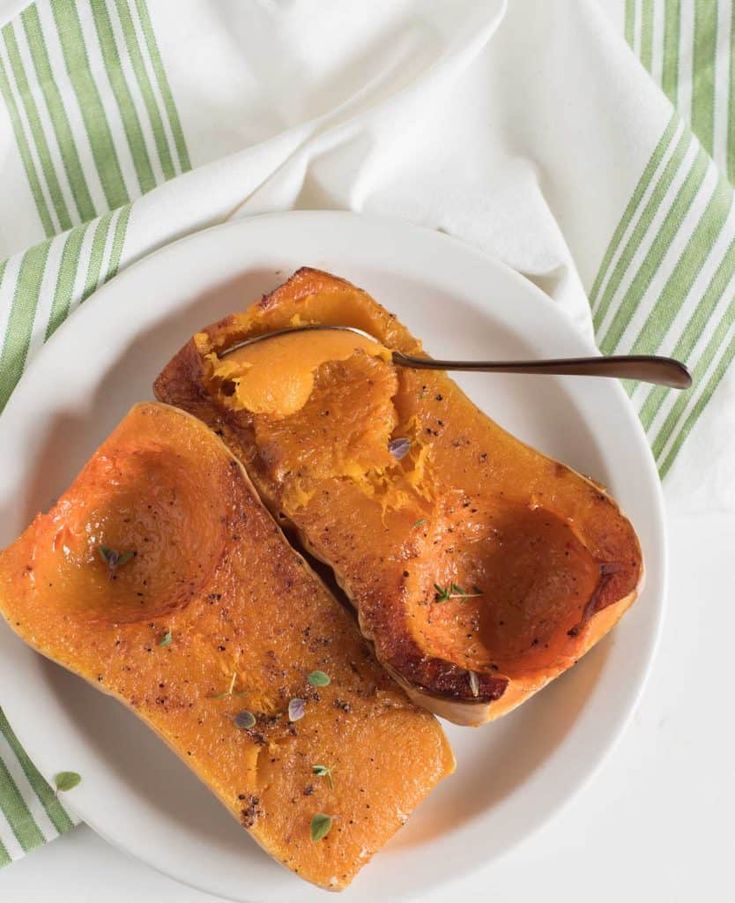 Meals today!
Meals today!
pumpkin puree recipe
Pumpkin is a herbaceous plant, a genus of the pumpkin family. This fruit is very willingly used by humans for food. First courses are prepared from pumpkin (excellent mashed soups, etc.), second courses, cereals, salads, snacks, excellent desserts, delicious jams, etc. I use pumpkin to make delicious homemade cereals and of course I make sweet pumpkin puree for my child.
Of course, now you can just go and buy ready-made pumpkin and any other puree in the store. But many children simply cannot eat it, usually due to the presence of various preservatives and additives in baby food bought in stores. Therefore, I advise all mothers, if possible, to cook exclusively homemade puree for their children. Today I will tell you how to make homemade, tasty, sweet, healthy pumpkin puree very quickly and easily. After all, having a pumpkin grown on your own plot or bought in a store or in the market, you can pamper your children exclusively with homemade food.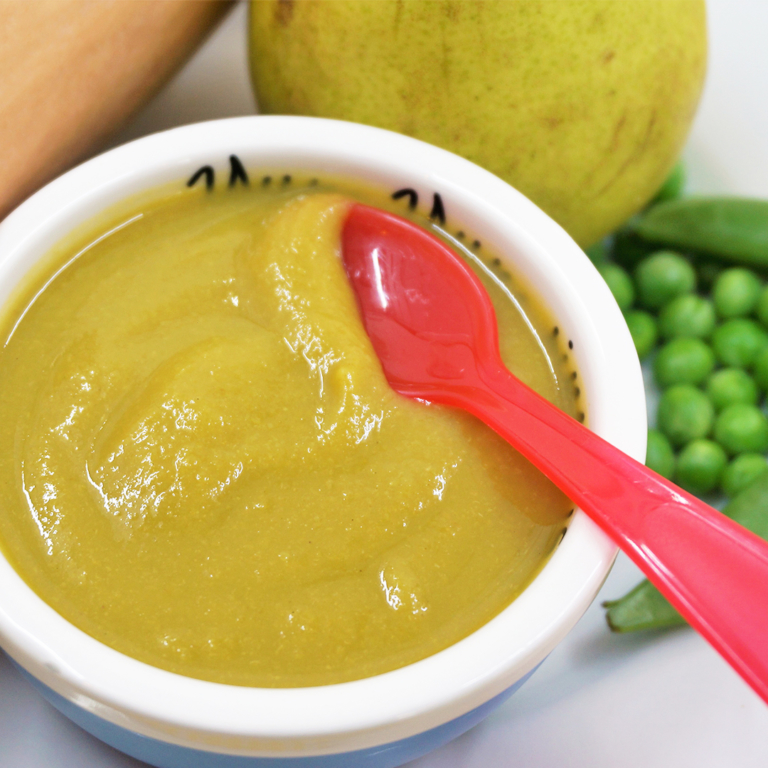
one Would need:
2 How to make baby pumpkin puree:
Needed:
- Pumpkin - 800 gr.
- Sugar - to taste
- Water - according to the level of the gourd
How to make baby pumpkin puree:
The most difficult thing in this recipe is to peel the pumpkin from seeds and skin. The process is time consuming, so you can call your spouse for help. I cut the pumpkin into 4 parts. I clean each part of the pumpkin from the pulp and seeds.
We don't throw away the seeds, we'll fry (prick) them later - we get very tasty and healthy seeds, which many people gnaw with great pleasure. It remains for us to peel the pumpkin from the skin. When everything is done, cut the pumpkin pulp into pieces and put in a saucepan. Fill with water at the level of the pumpkin or a little less.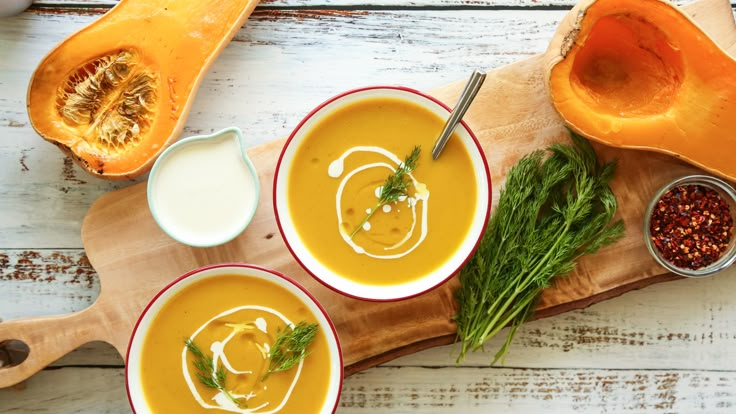
Add sugar and boil pumpkin. Bring to a boil and reduce the fire to a minimum, at the same time, the mass should barely boil. Let the pumpkin soak in this form for about 1 hour. Water evaporates a little, no big deal. This will make the puree thicker. The resulting boiled pumpkin, we just have to puree. We do this with an immersion blender.
One, two, three, and pumpkin puree is ready. Delicious, sunny, tender, and most importantly very healthy. You can leave the puree in the container in which we boiled it or arrange it in small jars, from which your child will eat puree very well. Also, you will know how much pumpkin puree the baby consumed. I put it in jars with a volume of 100 gr. each.
It's more convenient for me. We put the finished chilled pumpkin puree in the refrigerator for storage. Approximately 700-800 ml. The resulting puree is enough for me for 3 days. Then I boil it again and store it in the refrigerator. Also, this puree can be diluted with boiled water, making pumpkin juice (I already told you how to make homemade pumpkin juice). Quickly, simply and to the maximum it is useful for your kid!!! With homemade food, our kids will always be full and cheerful.
Quickly, simply and to the maximum it is useful for your kid!!! With homemade food, our kids will always be full and cheerful.
And here is a puree with the addition of pumpkin, dried apricots and apples, I also often cook for my child - after all, they have one benefit!!!
Bon appetit wishes all adults and children Svetlana and my home kulinarochka2013.ru!
How to make homemade pumpkin juice - you will find in a step-by-step recipe with a photo
Do you want to receive new recipes by mail?
Pumpkin Puree 7 months +
(4) 6-7 months Gluten Free Dairy Free Flour Free Meat Free Sugar Free Egg Free Boil Second Breakfast Breakfast Bake Low Calorie Vegetables First Feeding Afternoon Snack Cooked Puree Recipes
No comments
Levchuk Victoria©
Pumpkin puree can be prepared in many ways, for example baked or boiled in water. But the main thing to remember is that pumpkin comes in various shapes and sizes, has a golden hue, is rich in vitamin A and beta-carotene.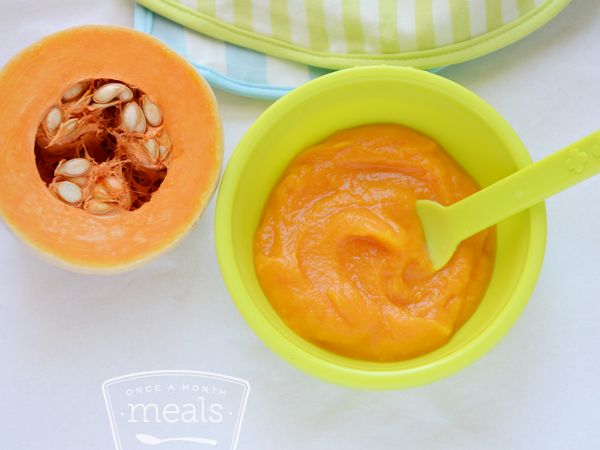
When digested, beta-carotene is converted into vitamin A in the human body, which improves appearance, vision, etc. Not only does pumpkin help skin and eyes, but it's also a great source of antioxidant carotenoids that help protect our cells from damage. Pumpkin is rich in various useful substances, but its most important advantage is its natural sweetness, which both adults and children love so much. This product is usually introduced immediately after the baby is introduced to zucchini, broccoli and cauliflower.
Please note that pumpkin is the first product that is not green in color, therefore, and not only therefore, it is necessary to monitor the baby's reaction to this type of complementary foods. We observe the rule of waiting, in case of an undesirable reaction, we turn to the pediatrician, and stop giving pumpkin.
Pumpkin puree is a beautiful dish for young children. Orange color, sweet taste attract children and help keep food interest.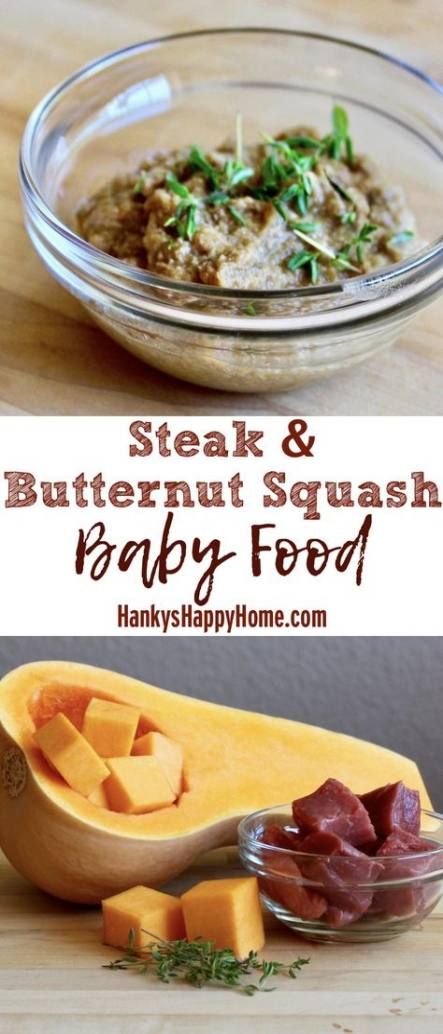 Rarely do children refuse this product.
Rarely do children refuse this product.
Pumpkin suitable for ages 6-7 months. Introduced complementary foods: pumpkin and vegetable oil.
puree from pumpkin
| Print a recipe |
Simple preparation of pureure from mushrooms for infants.
| Portions | Prep time |
Ingredients
- 1 Average sweet pumpkin, not heavier than 2 kg
Portions: Portion
-
Cut the sweet garbage, URIED.
-
I show an example of pumpkin cleaning on different vegetables. Usually, if you need to save a part of the pumpkin, then it is cut, part is used, and the other part is left with the seeds, the cut is covered with cling film and sent to the refrigerator in the bottom drawer.
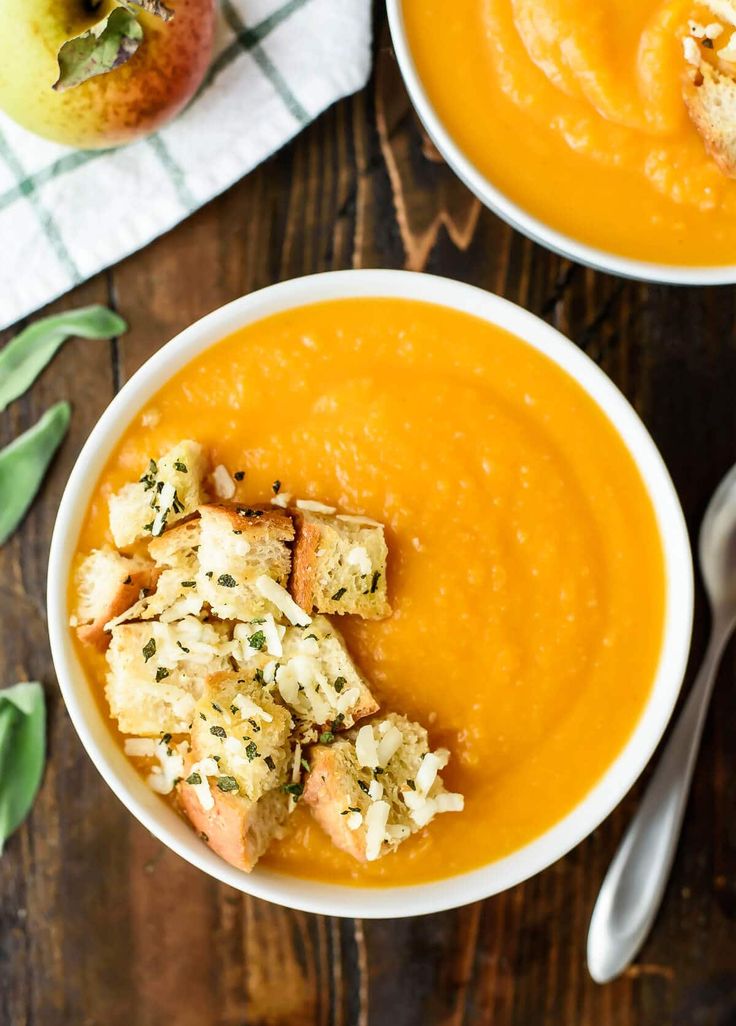 It will stay for a long time.
It will stay for a long time. -
The photo below shows small cuts, this is how the pumpkin is prepared for the oven if baked in halves.
-
Place pumpkin with water in a pie dish. Check the water level while baking. You can also peel the pumpkin, cut out the seeds and then cut into chunks and boil/steam until tender, and follow steps 6-8.
-
Bake in the oven at 200 degrees for 40 minutes until the peel starts to wrinkle and the halves are soft, then remove the peel with a spoon.
-
Place the pumpkin in a blender and puree.
-
Add water, milk formula, mother's milk as needed to achieve a uniform consistency.
-
Add vegetable oil if included in the diet.
-
Comparison of commercial baby food jar (left) and homemade jar (right). Of course, we compare only visually. The taste can only be described and believed in my words.
-
The taste of the prepared food is not so bright, it seems that the pumpkin was baked, then water was added to it, not sweet.
